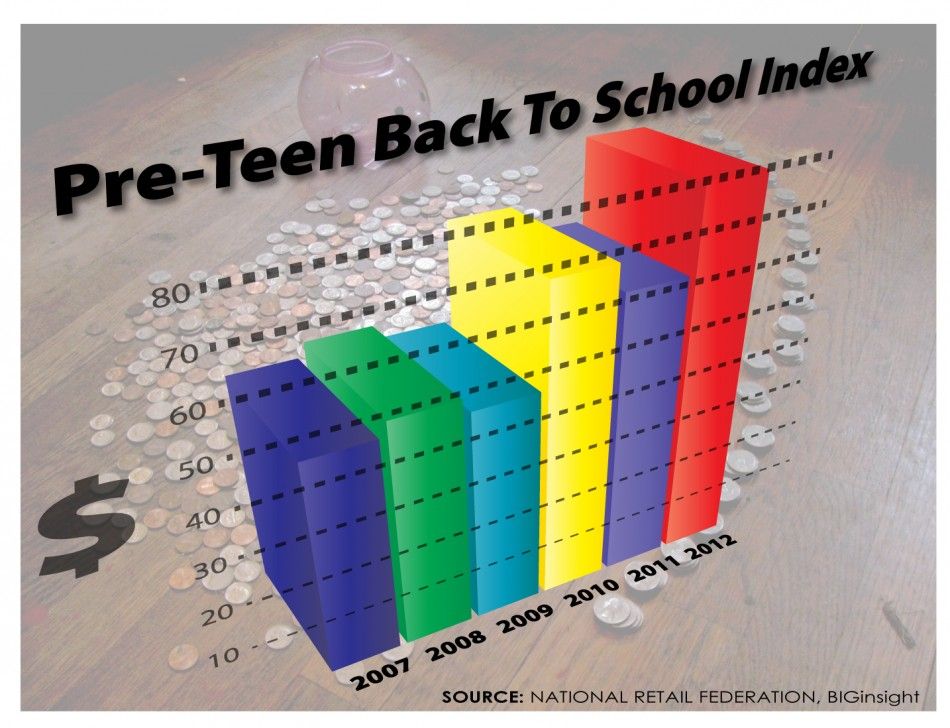Back-To-School Shopping: Pre-Teens Have More Cash To Spend
In the United States, Mom typically has the most say when it comes to back-to-school shopping, with kids being towed along to try on slacks and sweaters. But pre-teens are consumers, too, and the back-to-school season is probably their No. 1 season for making autonomous decisions about the kinds of extras they might pick up while their parents foot the bill for the essentials.
According to the National Retail Federation, kids ages 6 to 12 have more money to spend this year than they have had in the previous five years. The young'uns will have, on average, nearly 80 bucks to spend on the latest pre-teen craze in backpack or binder designs, stickers, markers or any other essential classroom gear that mom or dad "just don't understand." That's 27 percent more than what pre-teens had last year ($62.50) and 68 percent more than the $47.21 they had five years ago.
The reason? An increasing number of parents are being increasingly generous to their pre-working-age children, giving them more money to make their own purchasing decisions.
"It seems their 'allowance freeze' has ended," declared the NRF, referring to a recent slump in kids' spending on back-to-school items. "Teenagers and pre-teens this summer will spend more of their own money on back-to-school items."
According to an annual nationwide comprehensive back-to-school survey of 8,509 consumers conducted for the NRF by market research firm BIGinsight, the number of pre-teens being allowed by their parents to make some of their own back-to-school purchases is also back to where it was in 2007 at 32.3 percent, up considerably from the 22.8 percent dip that occurred in 2008 after the mortgage crisis exploded and sent the economy reeling.
The NRF said Thursday that as of Aug. 7, parents and the college-bound still had over half of their shopping to do in preparation for their upcoming studies. Overall, spending on K-12 and college is expected to be nearly $84 billion, higher than last year.
But consumers are being cautious, NRF President and CEO Matthew Shay said, according to the announcement: "Given how much of an impact the economy is having on consumers' buying decisions, retailers will remain competitive up through the final sale after Labor Day, rolling out Web, in-store and even mobile promotions to entice children and their parents."

© Copyright IBTimes 2024. All rights reserved.






















